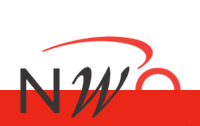


YEP 2005 (Young European Probabilists)
workshops
Workshop on
"Self-similar random structures
Hausdorff dimension and branching"
EURANDOM, Eindhoven, The Netherlands
March 14-18, 2005
Programme &Abstracts| Speakers & Participants |Registration | Practical Information | Pictures
1. Scientific scope
The models of probability and statistical physics give rise to a large number of
self-similar random objects the mathematical descriptions of which often make
effective use of trees or tree-like structures. For this workshop we have
therefore invited two leading experts in the field of probability on trees,
Russel Lyons and Balint Virag, who will give minicourses telling us about their
current research. A focus of this workshop will be on applications of trees in
spatial branching processes and the computation of Hausdorff dimensions, but we
hope that a lot of related subjects will be discussed.
In the theory of branching processes the role of trees is perhaps most evident. Classical work makes extensive use of ideas such as size-biased trees, conditioned trees, encoding of trees in random walk excursions and so on. More recent developments go towards branching processes with interactions (such as catalytic and mutually catalytic branching, state dependent branching) and more complex branching mechanisms (e.g. Neveu's branching without mean). The modern toolbox includes more sophisticated techniques such as: Brownian snake (as well as non-Markov tree embeddings), look-back process, stochastic partial differential equations and martingale problems.
Random fractal sets arise naturally from statistical physics models. Many features of physical relevance are encoded in the geometry of these sets. Understanding these geometries pose a major challenge to researchers in probability theory and mathematical physics. Much of the recent progress is based on the idea of finding a tree structure underlying the problem. Techniques based on trees are, e.g., stochastic co-dimension and percolation methods.
Exciting progress has been made in the last years in our understanding of a lot of different models, and it is the aim of this workshop to bring together young researchers, who have worked in one aspect of these fields, to get to know each other, exchange ideas, and initialise cooperations across the fields. We would particularly like to encourage communication across the boundary between discrete and continuous settings.
The workshop will incorporate
a mini-course of approximately four hours by the two invited speakers,
talks of 45 minutes by the participants, focusing on a particular model and the relevant techniques,
problem sessions chaired by selected participants, in which new projects for cooperation will be presented.
Time will be given for individual meetings of participants following the problem sessions to exchange ideas and prepare collaborative problem solving efforts.
Organisers
Achim Klenke (math@aklenke.de ),Johannes-Gutenberg Universitšt Mainz and Peter Moerters (maspm@bath.ac.uk), University of Bath
This workshop is sponsored by
Last modified:
26-03-10
Maintained by Lucienne Coolen